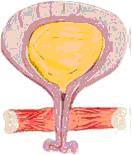Pelvic floor exercises are often recommended as the first line of treatment for stress incontinence. The exercises, also known as kegels, are designed to strengthen the pelvic floor. Your kegel muscles, or pubococcygeus (PC) muscles, provide support for bladder, uterus, and bowel; if they’re weakened, you may have trouble controlling your bladder or bowel. Common causes of pelvic floor weakness include pregnancy, prostate surgery, enlarged prostate, obesity, and menopause.
Kegel exercises can be done by both men and women. They involve repeated contractions of the pelvic floor muscles. The exercises are pretty simple, but one of the hardest parts about it is finding the correct muscles to squeeze.
There are several ways to find your kegel muscles:

Both men and women:
- Try stopping your urine mid-stream. The muscles you used to do this are your PC muscles. Don’t make this into a habit though; this process is only used to find the correct muscles. Kegel exercises should be done with an empty bladder.
- Pretend to prevent from passing gas. If you feel a “pull and lift” action, you are using the right muscles.
- Biofeedback training involves inserting a probe into the vagina or rectum, in which a monitor shows whether or not you’re squeezing the right muscles. This session is facilitated by a healthcare professional.
For women:
- Insert a finger inside the vagina and tighten the surrounding muscles around the finger.
- Use vaginal weights (vaginal cones) to help you locate the correct muscles. A weight is inserted into your vagina, and your job is to squeeze your PC muscles to keep the cone from falling out.
For men:
- Insert a finger inside the rectum and squeeze. Try to do so without also tightening your abdomen, thighs, or buttocks.
Locating the pelvic floor muscles can be tricky. If you still have trouble finding the right muscles, ask your doctor or a pelvic floor therapist. If you think you’ve mastered the trick, visit our Tips & Advice Center to learn how to actually do the exercises!
